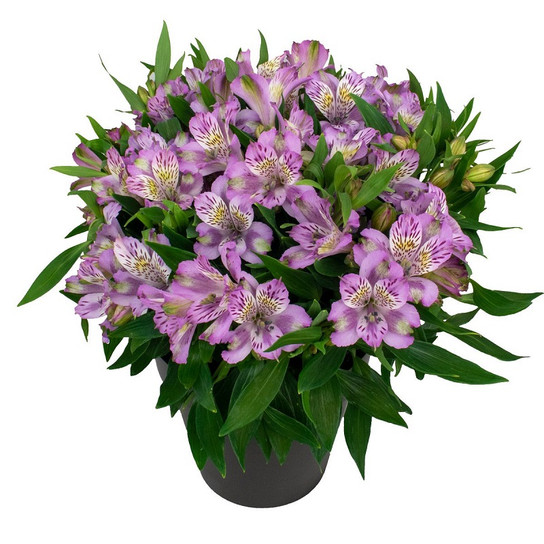
Peruvian Lilies
Uses:
- Border Plant
- Container Gardens
- Color Combinations
Features:
- Cut Flowers
- Long Blooming or Rebloomer
- Naturalize
Sunlight:
- Partial Shade to Full Sun
- At Least 3 Hours Of Direct Sunlight
Growing Zones:
- 7-10
- What is My Zone?
Peruvian Lilies, also known as Alstroemeria, are flowering perennials known for their exotic flowers in a range of colors, including pink, orange, yellow, and purple. The plants bloom from late spring to fall and great for using in borders, cutting gardens, or as container plants.
About Peruvian Lilies

Lily of the Incas
South America
Perennials
Herbaceous
7-10
White, yellow, orange, lavender, purple, pink, and red
Summer to fall
Clumping
Bees, butterflies
Drought
Deer, Rabbit
How To Use Peruvian Lilies In The Garden
Peruvian Lilies, or Alstroemeria, are perennial plants native to South America. Despite their name, they are not true lilies. These plants produce flowers in fiery oranges to muted lavenders, each petal streaked with contrasting markings. Unlike true lilies, they pose no threat to pets, though handling may irritate skin. Grow them for relentless summer-to-frost flowering, even in poor soils, where their tuberous networks slowly colonize.
Mass Peruvian lilies in sun-drenched borders, with a position at mid-layer behind low-growing sedums or before towering salvias. In containers, dwarf varieties thrive with afternoon shade and can be paired with trailing verbena for texture contrast. For cottage gardens, let their speckled blooms mingle with roses, ensuring staggered color while supporting pollinators like hummingbird moths. Amend clay soils with grit to prevent rot, and interplant with alliums to deter slugs.
Peruvian Lily Care
Peruvian Lilies, or Alstroemeria, appreciate rich, well-drained soil with high organic content. They prefer locations that receive full morning sun and afternoon shade. Provide about one inch of water per week, ensuring the soil remains moist but not soggy. Fertilize these plants with a balanced fertilizer, such as a 10-10-10 mix, starting in the spring and continuing throughout the growing season.
Pruning Peruvian Lilies involves deadheading spent blooms to encourage further flowering and maintain a tidy appearance. In the fall, after the plant begins to decline, cut back all growth to ground level to prepare for winter dormancy. Move container-grown Peruvian Lilies to a protected area, like a garage or shed, during winter, as they require a dormant period and will not grow as houseplants.
Learn More About Peruvian Lily Care

Peruvian Lily Companion Plants
Give Peruvian lilies partners that can handle full sun, evenly moist yet freely draining soil, and a steady drink during summer heat. A rose hedge mirrors those cultural needs and supplies a taller, season‑long curtain behind the lilies, while vertical delphiniums (larkspur) weave through the clumps to prolong the cool‑toned flower show. At ground level, lantana blankets the bed with pollinator‑friendly umbels that thrive in the same warmth, and fleshy‑leafed sedum slips into gaps or pots to lend drought‑resilient texture once the alstroemeria pause.

























